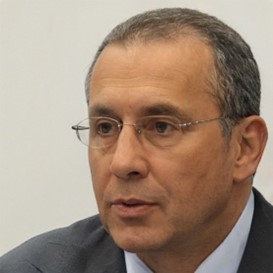Now Reading: Brainstorming Hope: The Fight Against Hypoxic-Ischemic Encephalopathy
-
01
Brainstorming Hope: The Fight Against Hypoxic-Ischemic Encephalopathy

Brainstorming Hope: The Fight Against Hypoxic-Ischemic Encephalopathy
Hypoxic-Ischemic Encephalopathy (HIE) is a medical condition that affects infants and occurs when there is a lack of oxygen and blood flow to the brain. It can result in severe neurological damage and developmental issues if not addressed promptly. In recent years, medical professionals and researchers have been tirelessly working to find innovative solutions to improve the diagnosis, treatment, and outcomes for infants affected by HIE. In this article, we will explore the latest developments in the fight against HIE and how hope is being restored to families facing this challenging condition.
Understanding Hypoxic-Ischemic Encephalopathy
Hypoxic-Ischemic Encephalopathy can arise during pregnancy, labor, or shortly after birth. The condition occurs due to various factors, such as a prolonged lack of oxygen during childbirth or complications during pregnancy that lead to reduced blood flow to the baby’s brain. The consequences of HIE can be devastating, with infants facing cognitive, motor, and sensory impairments.
Early detection and intervention are crucial in improving the long-term outcomes of infants with HIE. Medical professionals are continually refining diagnostic methods, including advanced brain imaging techniques and monitoring technologies, to identify HIE early in its development. This early identification allows for timely medical interventions, potentially reducing the severity of brain damage.
Advancements in HIE Treatment
Over the years, significant progress has been made in the development of treatments for HIE. Therapeutic hypothermia, also known as cooling therapy, is one of the most promising interventions. This treatment involves carefully lowering the baby’s body temperature to reduce metabolic activity in the brain, mitigating the damage caused by the lack of oxygen. Cooling therapy has shown encouraging results in minimizing brain injury and improving the long-term neurological outcomes for infants with HIE.
In addition to cooling therapy, ongoing research is exploring innovative treatments that target the underlying mechanisms of HIE. Neuroprotective drugs, such as erythropoietin and melatonin, have demonstrated potential in safeguarding brain cells from damage during hypoxic and ischemic events. These drugs may complement cooling therapy or be used as standalone treatments, paving the way for more effective and personalized approaches to managing HIE.
The Role of Rehabilitation in HIE Management
Early intervention and intensive rehabilitation play an essential role in supporting children with HIE in reaching their developmental milestones. Multidisciplinary rehabilitation programs, involving physical therapists, occupational therapists, speech-language pathologists, and developmental specialists, are tailored to address the specific needs of each child.
Rehabilitation focuses on enhancing motor skills, promoting cognitive development, and improving communication abilities. The goal is to maximize each child’s potential for independence and participation in daily activities. As research continues, technology is also being integrated into rehabilitation approaches, offering exciting possibilities for personalized and engaging therapies.
Empowering Families with Knowledge
Families faced with an HIE diagnosis often experience emotional distress and uncertainty about the future. Understanding the condition, its implications, and available treatment options can empower them to make informed decisions and seek the best possible care for their child.
As medical advancements and research progress, it is crucial for families to stay informed about the latest developments in HIE management. Support groups and online forums can provide a network for families to share experiences, exchange knowledge, and find emotional support from others who are on similar journeys.
Protecting Your Child’s Rights with an HIE Lawyer
In cases where HIE may have resulted from medical negligence, families have the right to seek legal recourse. An HIE lawyer specializes in medical malpractice cases related to birth injuries and can help families pursue justice and compensation to secure the resources needed for their child’s care and rehabilitation. While the focus remains on medical advancements, it’s essential to recognize the importance of advocating for a child’s rights with an HIE lawyer in instances where preventable harm may have occurred.
Conclusion:
The fight against Hypoxic-Ischemic Encephalopathy continues to be a collective effort, with medical professionals, researchers, and families all playing vital roles. Advancements in early detection, treatment, and rehabilitation offer hope for improved outcomes for infants affected by HIE. Additionally, the power of knowledge and advocacy can empower families to make informed decisions and secure the support their child needs. As the journey to combat HIE progresses, the spirit of hope remains a driving force, inspiring all involved to strive for a brighter future for these children.











